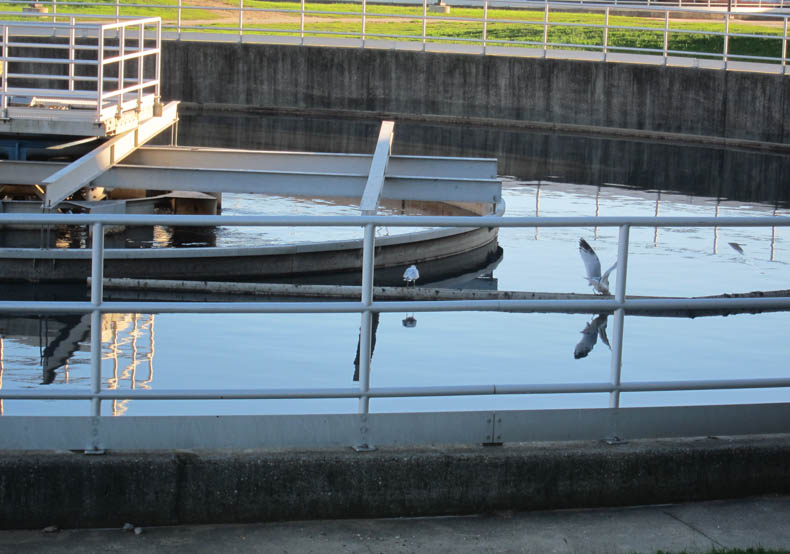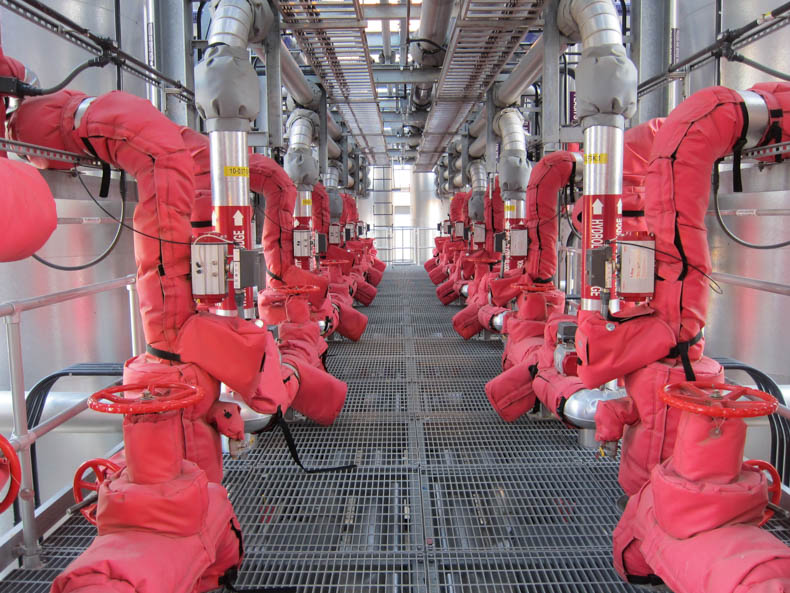 In a fenced-off corner of Washington, D.C, down at the very tip, where the city’s diamond shape meets the Potomac river, is a giant feeding station for gulls.
In a fenced-off corner of Washington, D.C, down at the very tip, where the city’s diamond shape meets the Potomac river, is a giant feeding station for gulls.
Ok, that’s not its main function. If you have ever pooped in DC, or in parts of four surrounding counties, including Dulles International Airport, you have helped support the birds at the Blue Plains Advanced Wastewater Treatment Plant. It’s run by DC Water, an agency that loads visitors like me into a tour van that says “DRINK TAP” on the side. For historic reasons, D.C.’s drinking water is actually treated by the Army Corps of Engineers, not DC Water. But DC Water handles pretty much everything else about it, including what happens to it after it’s been used.
“Used water” is the term preferred by engineer Bill Brower, the program manager for DC Water’s Biosolids Program and the leader of a tour of Blue Plains arranged on Sunday for a local science writing organization. “Enriched water” is another amusing euphemism. You see, “waste water” makes it sound like trash, Brower says, when actually they can get a lot out of the stuff from our toilets. (And, the system being how it is, from our sinks, dishwashers, washing machines, and, in the old parts of town, even the water that runs off the streets.)
This valuable reclaimed material is delicately called “biosolids.” For years, DC Water has given it away, paying a company to truck it away, mostly to Virginia, and spread the gunk on farmers’ fields.
The circular pools where the gulls were feeding is one of the first stops for the used water. Arms slowly sweep the surface, nudging the floating oils and fats off to the side. The gulls perch on those arms, eating goodies from the top of the water. Sure, they poop in the water, too, but that’s what this water is all about. At the bottom, the pool is cone-shaped. Solids sink and are pumped out from the bottom.
The pools are not without smell. But it’s not nearly as bad as I’d imagined, considering this site handles the poop of 2.2 million people. It certainly smells better than some bathrooms. Brower says you get used to it, although it’s still a surprise when he gets to work on a Monday morning.
The main point of the tour was to show us a new system for processing the biosolids. After various trips through pools, screens, and a centrifuge, the solids visit a giant pressure cooker, then swim for a while in a massive digester. There, a community of microbes takes over, breaking up the proteins, fats, and other molecules from the biosolids, turning them into methane and carbon dioxide. Then the methane is burned to make electricity, all of which goes to power the tremendous quantity of pumping required to move material around a wastewater plant.
 The leftover solid material is “Class A” biosolids, which are clean enough to put on gardens. We ran out of time to see it, but Brower—who maintains the vegetable garden at Blue Plains in addition to his other work—says it’s just like soil, dark and rich, with no particular smell. Once they get all the permits lined up, DC Water plans to sell it to gardeners and urban farmers.
The leftover solid material is “Class A” biosolids, which are clean enough to put on gardens. We ran out of time to see it, but Brower—who maintains the vegetable garden at Blue Plains in addition to his other work—says it’s just like soil, dark and rich, with no particular smell. Once they get all the permits lined up, DC Water plans to sell it to gardeners and urban farmers.
It turns out that Brower lives in my neighborhood, so we shared an Uber home. (Conflict of interest report: he was planning to get reimbursed, so DC Water paid for my ride home. On the other hand, DC Water is also going to be selling my excrement.) When we got in, Brower commiserated with the driver about how hard it is to find the entrance, and told her he works there. “You work here!?” she exclaimed. “How do you take the smell?”
Earlier, Brower had described wastewater as the forgotten element of infrastructure. “Energy is sexy,” he said—all that solar and wind, making headlines. People have a lot of opinions about transportation–even bridges have started to get some attention. Most of us don’t think about wastewater. But that’s wonderful, he points out. In a lot of the world, human waste is a major public health problem. Here, you don’t have to think about it; it just works. And for that I have a lot of people, gulls, and microbes to thank.
Pictures: Helen Fields. That’s me.
For more detail on the new system, see this article published last month in the Washington Post.